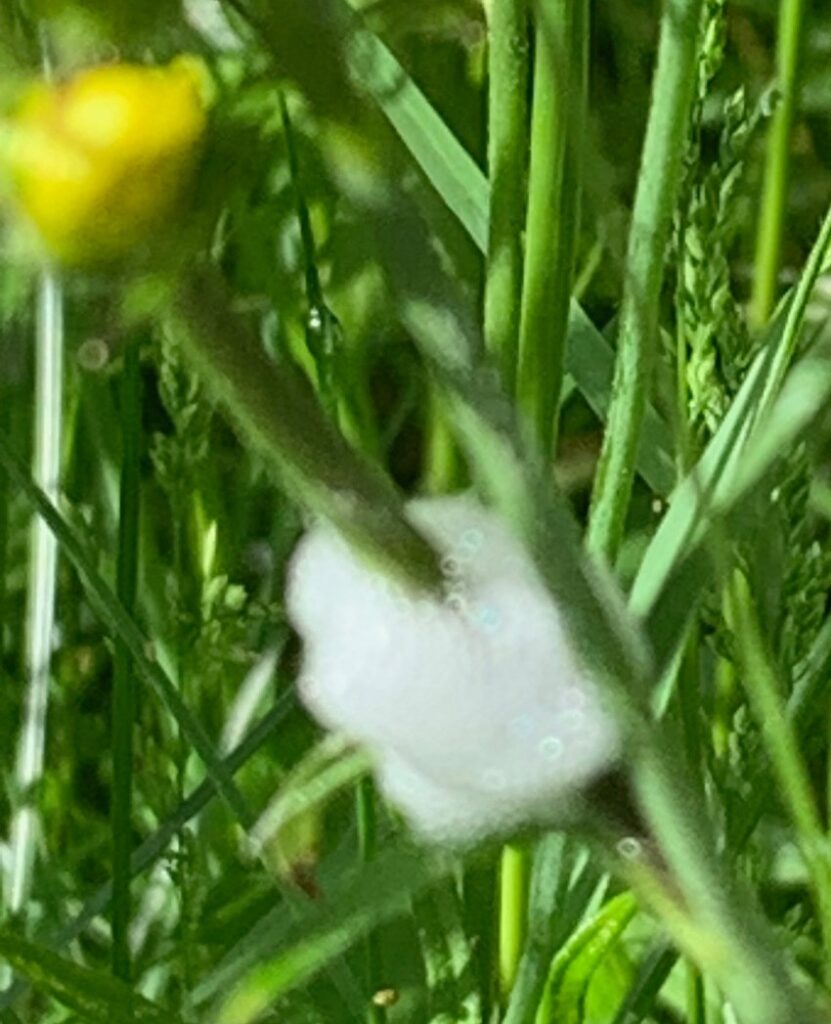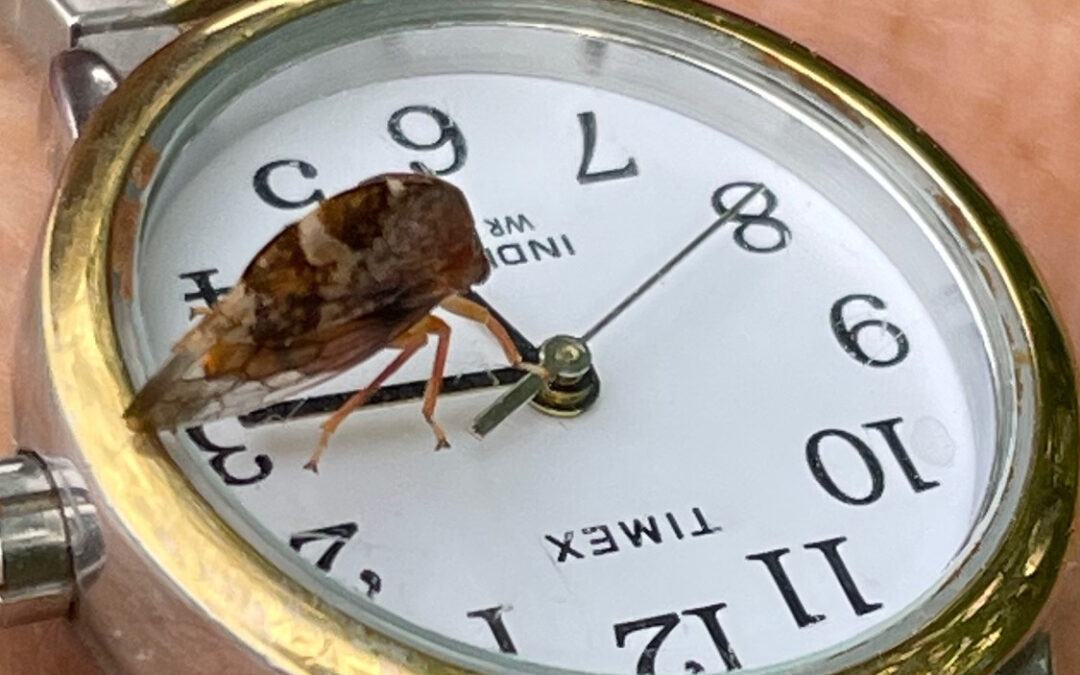As we walk along we see little blobs of bubbly foam on a stem here and there. Often referred to as frog spit or snake spit, whose spit is this?
It doesn’t come from either a frog or a snake. It is the house of a little bug nymph. And, yes, there really is a group of insects called bugs. The scientific name for this family is Hemiptera. Hemiptera is a family of insects that are called “true bugs.” Many things we call bugs such as “ladybugs,” are not bugs, but are a kind of beetle.
True bugs have mouth parts that can suck fluid and nutrients from plants. That is what the small bug nymphs are doing inside the froth you see. A nymph is an immature bug, just as a larva is an immature butterfly.
The little insect inside this spittle is an immature true bug. It sucks nutrition from the stem of the plant and builds a protective shelter with all this froth. Not only does it confuse people, many predators do not attack the nymph because they do not know what is inside the spittle. The froth also protects the nymph from changes in temperature.
These little nymphs feed from the fluid found in the xylem cells in the stem. Xylem carries primarily water from the plant roots to the leaves. It takes a special metabolism to get enough nutrition from the watery content of the xylem. That is unusual, because most of the nutrition is in the phloem cells that carry a sugary substance to feed the plant.
There are other kinds of bugs, of course. One of the other bugs is the cicada. A cicada is one of the largest true bugs. Cicadas live most of their lives under ground and emerge at a specific time to mate and lay eggs. Last year the 17 year cicadas came out in West Virginia. This year some 13 year locusts came out in various places in the United States.
Cicadas eat from tree and plant roots while they are underground. When I see big bulldozers tearing up the soil, I know that they are killing the immature cicadas.
We do not understand how they time their development to dig above the dirt all at the same time. It is important that they all emerge together in order to have enough males and females so that each one can find a mate and lay eggs for the next generation.

Another bug that most of us know is the aphid. These are very tiny. They also suck the juice of a plant, and then they excrete sugary water. It is this “honeydew” that the ants like, so you may see ants following the aphids. This combination of aphids and ants is common on roses and other garden flowers. Sometimes ants will take aphids up the stem of a plant so they can drink the honeydew. It is not so different from the way we move our dairy cows around so we can get milk.
Red and black boxelder bugs are another kind of bug that most of us have seen in the autumn, when they collect on a nearby boxelder tree. Sometimes they find their way into our house. They are harmless and will disperse if you leave them alone. Like other bugs, they do no harm to people.
I was able to photograph a little leaf hopper on my wrist watch. It just hopped off a plant along our trail and sat there trying to figure out what the second hand was doing going around and around. Notice what a high back it has. Leaf hoppers often have strange irregular shapes.
Most bugs drink the liquid from plants. They do not usually cause significant damage from sucking the liquid, but by piercing the protective coating of the plant cells, they may spread plant diseases. This is one of the primary reasons that some bugs are considered pests on farm crops.


